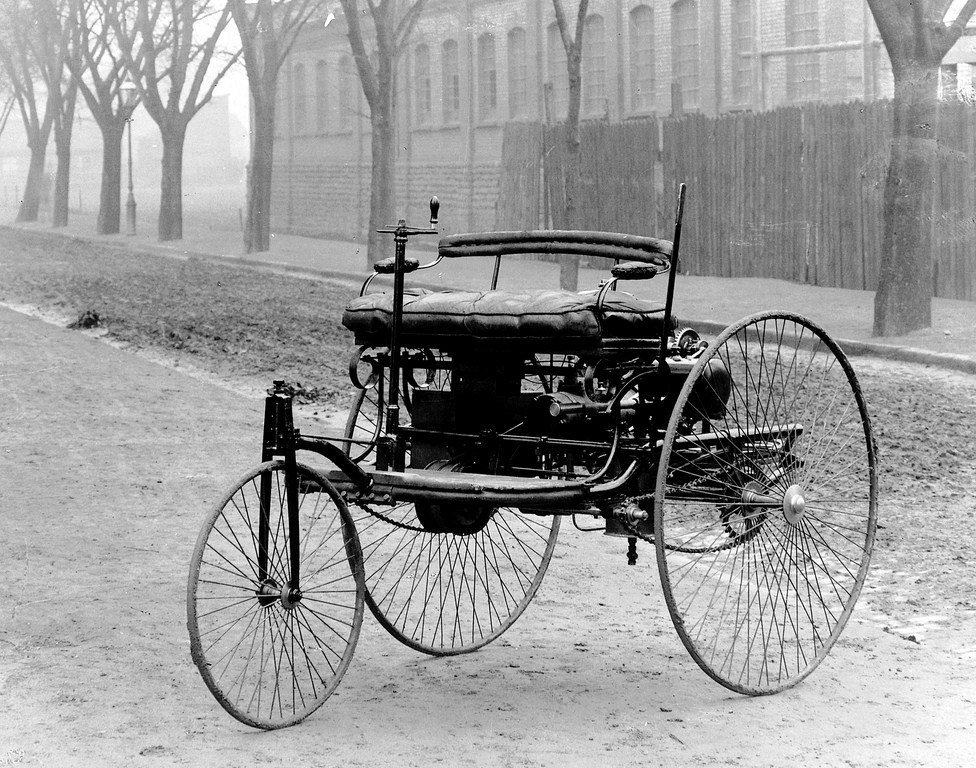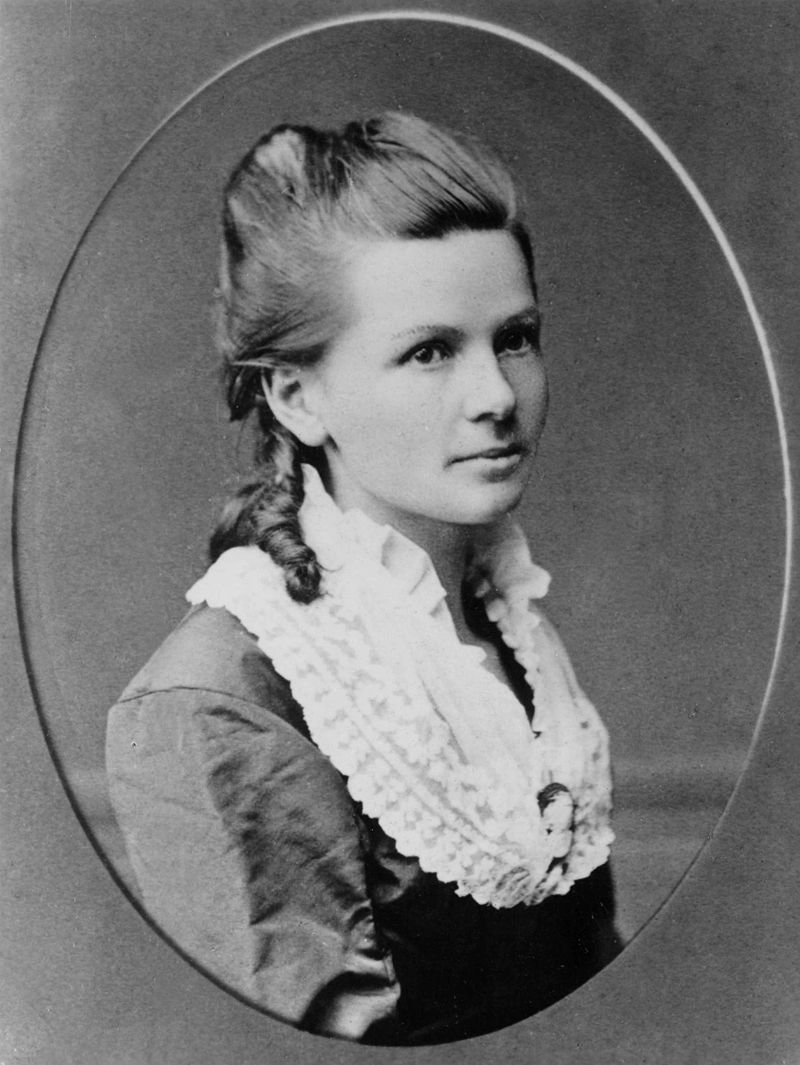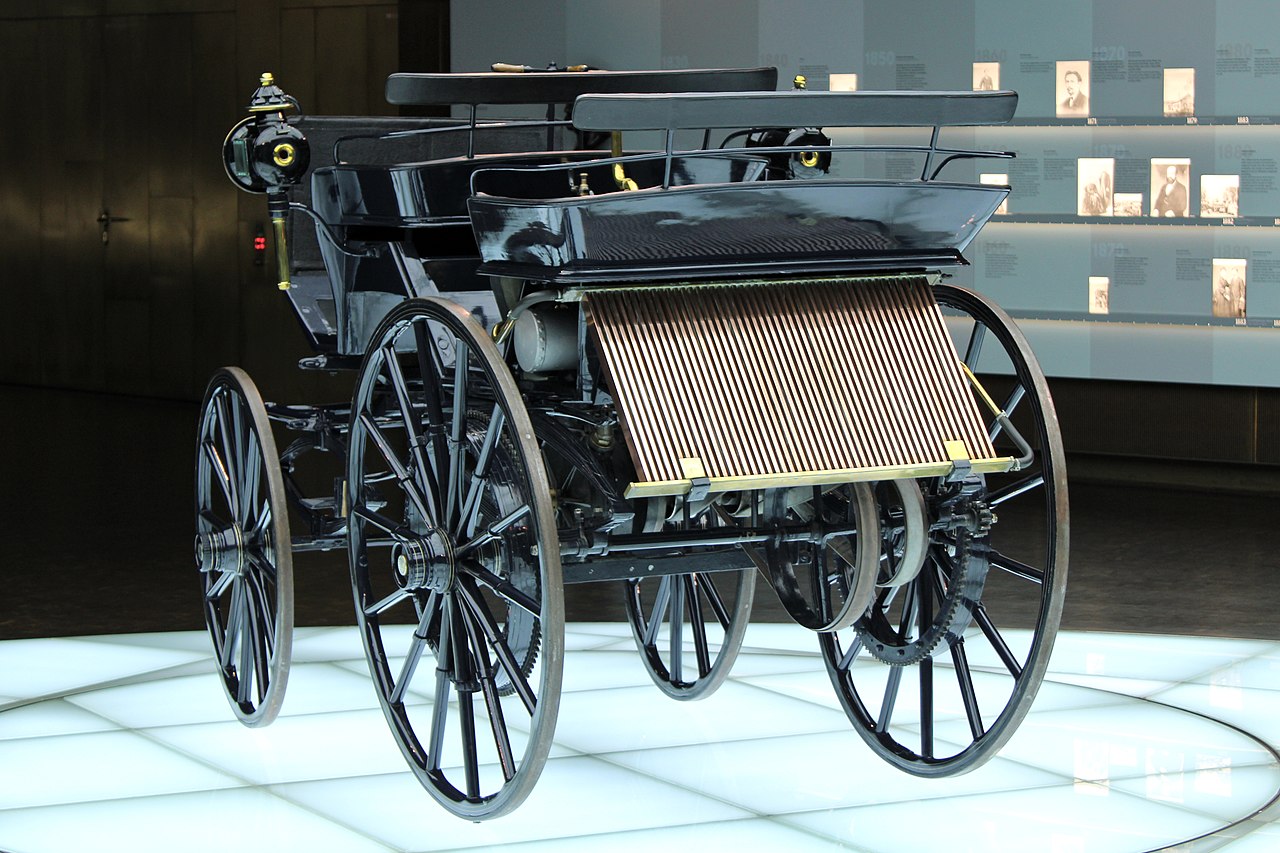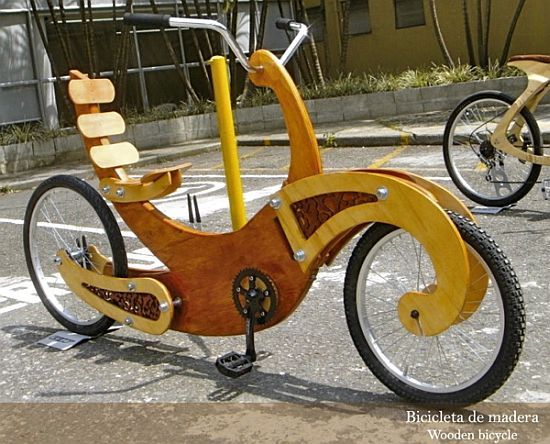The first car ever, powered by a gasoline engine was made by Karl Benz, the German inventor in 1885.
He was granted a patent for his invention on January 29, 1886 – patent no. 37435 which we call today the “Birth certificate of the automobile”.

Public Domain.
Benz’s vehicle (Benz Patent-Motorwagen No.1) had a single-cylinder four-stroke internal combustion (IC) engine, three wheels of which the front one was smaller, and 0.75 horsepower.
It was first driven on July 3rd, 1886 in Germany and achieved the speed of 10 mph (16 km/h).
Of course, the first car ever built is under the ownership of Daimler-Benz AG group (owners of Mercedes-Benz brand).
Contents
Who Was The First Ever Long-Distance Driver?
The story of the first automobile ever would be incomplete without mentioning Karl’s wife Bertha Benz.
Bertha also participated in the making of the car in a way that her dowry money financed the project.
Unfortunately, the law back then didn’t allow for a married woman to apply for a patent. Therefore, the sole patent owner of the first three-wheeled vehicle ever goes to Karl Benz.

However, her biggest contribution to the project was her adventurous spirit.
On 5th August 1888, Bertha Benz decided to take the Benz Patent-Motorwagen No.3 for a spin and drove the distance of 106 km from Manheim to Pforzheim, making her the first-ever long-distance driver.
They’ve caught the public eye with that move and got the Model 3 its first sales.
Not only that Bertha Benz is the first long-distance driver ever, but also Bertha Benz is the first female driver.
What Preceded The Invention Of The First Car?
Although most historians would agree that Benz created the first “real car” in 1885, the idea of a “horseless carriage” was there a long time before.
Let’s start with the history of the automobile with Ferdinand Verbiest. Ferdinand was a missionary in China and during his pilgrimage, he became a good friend with the Chinese emperor.
In the 1670s, Ferdinand made a toy car as a gift for the emperor, now known as the first self-propelled vehicle.
Although, since it was only 25,6 inch long and could not transport people, we can hardly call it a car.
The second on this list is Nicolas-Joseph Cugnot. In 1769, he built first ever steam-powered vehicle capable of human transport for the French army.
Uniquely, the vehicle had a speed of only 2.5 mph (4 km/h) and was so hard to steer that the French army had to give up the project.
Namely, another memorable patent was by the French inventor and politician Francois Isaac de Rivaz who designed the world’s first internal combustion powered automobile fueled by hydrogen, in 1808.
As a result, Francois created the first-ever vehicle powered by hydrogen.
In 1870 Siegfried Marcus built the first gasoline-powered combustion engine which he put on a simple handcart.
The only way to start the cart was to lift the drive wheels off the ground and spin them.
In 1876 Nikolaus Otto designed the first-ever four-stroke petrol internal combustion engine.
Surely, at the end of this list, we must mention Karl Benz one more time because prior to building his first car he made a reliable two-stroke petrol engine which encouraged him for his future inventions.
What Was The First Ever Four-Wheeled Car?
Most people would probably think that the first four-wheeled vehicle was Model T, made by Henry Ford in the United States.
Besides, Ford’s car was closest to a modern car and was the first to be mass-produced.
Whereas, Gottlieb Daimler and Wilhelm Maybach were the first to install a gas-powered engine on a stagecoach in 1886, making it the first four-wheeler ever.

By Alexander Migl – Own work, CC BY-SA 4.0.
The history of the automobile is a long and winding road. More than 100,000 patents helped to form the car as we know it today.
Now that you know what was the first car ever made, find out what was the first computer game ever.




